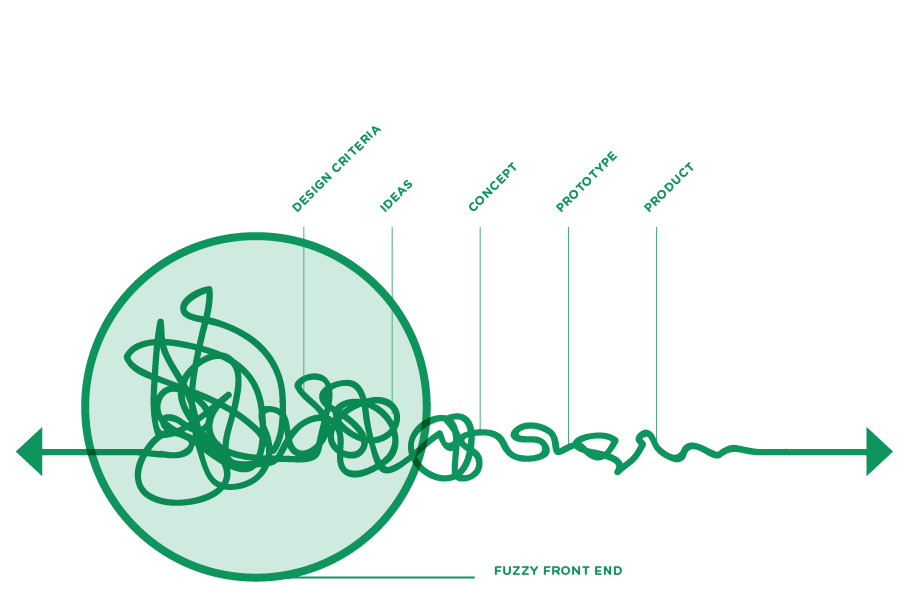While reading: From Designing to Co-Designing to Collective Dreaming: Three Slices in Time by Liz Sanders and Pieter Jan Stappers, I came across the jargon: “Fuzzy Front End.” Fuzzy Front End (FFE) is essentially the beginning steps in the process of designing product engineering processes and NPD (New Product Design) [1]. It is the situation where new ideas and concepts undergo judgement for opportunity and viability. Although FFE may not be the most expensive part of NPD it can take up to 50 percent of the development time [2]. Five different elements are normally considered within this design process [3]:
- Opportunity Identification
This is where chances are weighed via the business guidelines. - Opportunity Analysis
This step takes into account all steps necessary/implications to bring the product on the market (e.g. who are the customers? What do they require?) - Idea Genesis
This step describes the iterative process of the opportunity and its progress from birth into a tangible idea. - Idea Selection
The analysis of the idea in terms of business value and choosing to persist or forfeit. - Idea and Technology Development
The start of implementing the idea as a real product/technology in the current market.
The term Fuzzy Front End was first coined by Smith and Reinertsen [2] and originates from the messy beginning and often repetitive tasks designers go through. It is where the strategy and direction and the “what” of the development effort are designed
Picture: Chisholm, J. (2013). "BULLETIN: AN INTERACTIVE PROJECT". Interactivity. pp. 32-35. (http://current.ecuad.ca/bulletin) [1] Kim, J.; Wilemon, D. (2007). "Sources and assessment of complexity in NPD projects". R&D Management. 33 (1): 16–30. [2] Smith, Preston G. and Reinertsen, Donald G. (1998) Developing Products in Half the Time, 2nd Edition, John Wiley and Sons, New York, 1998. [3] Koen; et al. (2007). "Providing clarity and a common language to the 'fuzzy front end'". Research Technology Management. 44 (2): 46–55.
